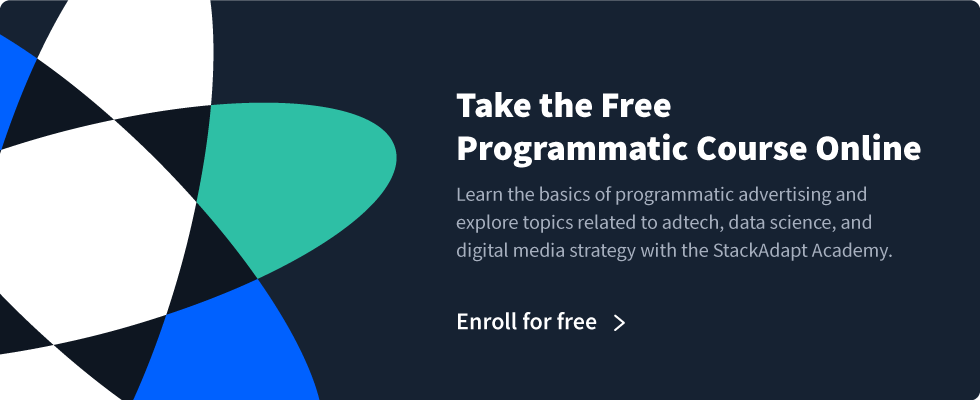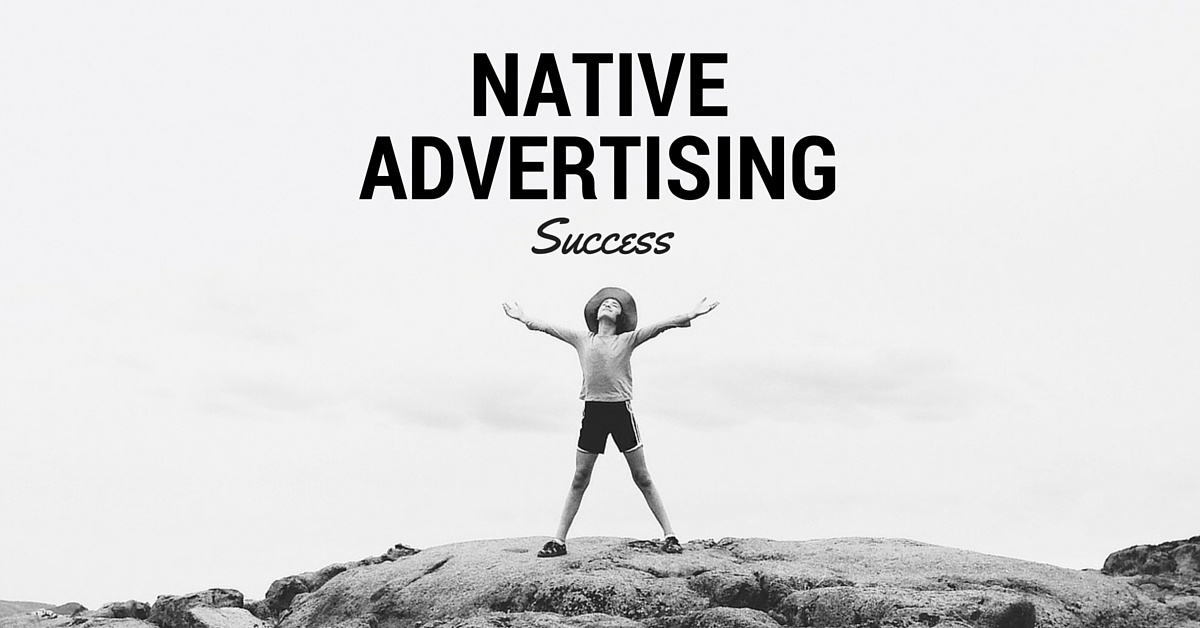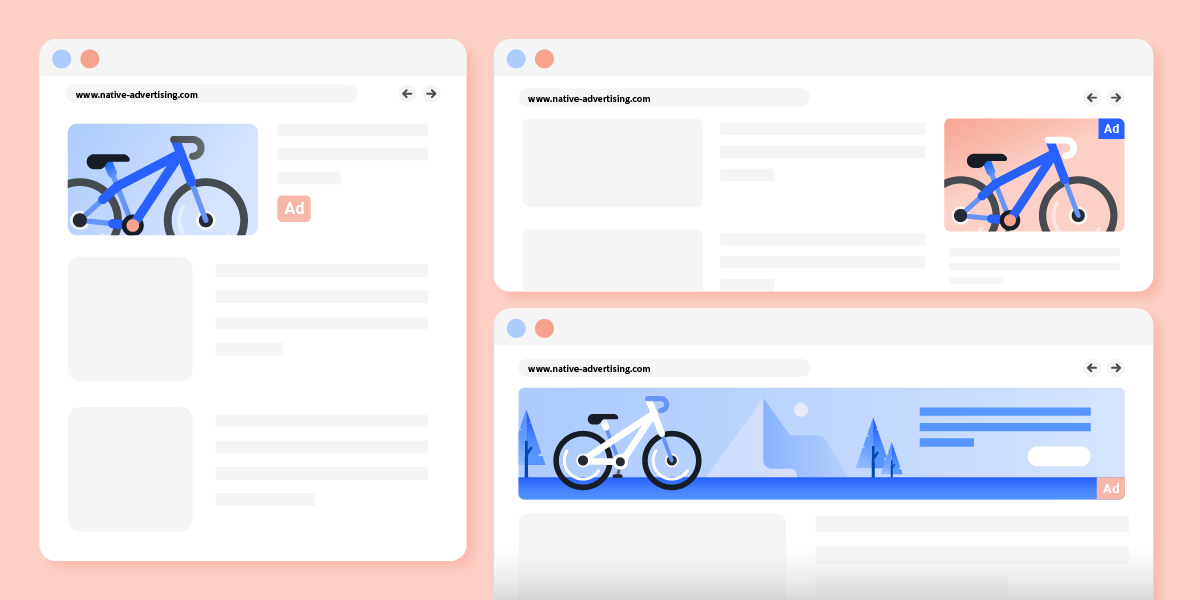Each and every minute of the day, blog writers publish 1,400 new posts, Facebook users share 2,460,000 pieces of content, and Twitter users tweet 277,000 times. Enough to make your eyes glaze over, isn’t it?
Internet users are relentlessly publishing content, and in order for it to be seen, it not only has to cut through the noise—it also has to get in front of the right people. For this reason, more and more advertisers are looking to new and effective distribution channels to get the right eyes on their branded content—channels such as native advertising.
The question becomes: how do I run a “successful” native advertising campaign? No need to worry, we’re here to help. In this blog post, we outline five essential steps to ensure that your campaign goes off without a hitch.
1. Know Your Audience
You wouldn’t leave your house before putting your shoes on, would you? Well the same goes for audiences and native ad campaigns: Knowing who your audience is and what their pain points are is vital to success.
It’s a well-known fact that branded content is most effective when it targets specific audiences and that content writers should always have an audience in mind when crafting a content piece. The same is true for when advertisers are setting up their native ad campaign. Take StackAdapt‘s platform, for instance. It allows users to target audiences across a number of categories, including geo-location, demographic info, device type and more. Knowing where your target audience fits within these categorical subsets is key to running a successful native ad campaign.
If you need help developing your buyer personas, you can check out this blog post on how to create and use personas in your content marketing strategy. But in any case, before you even think about running a native ad campaign, you need to get a handle on who your audience is.
2. Create Compelling Content
It’s no secret that native advertising is most effective when it’s used to promote branded content—i.e. when a native ad clicks-through to content as as opposed to a sales-y landing page. Why is this true? Well, it has to do with a basic premise behind native advertising: that by reaching audiences when they’re in a content consumption mode, brands are more likely to grab a user’s attention and entice them to read their content.
But not just any old content will do. How successful your native advertising campaign largely depends on how engaging your content is. Serve up something useful or educational, incorporate visuals, and, as we mentioned above, speak to specific audiences.
3. Set Goals
As with any type of advertising, the best way to gauge effectiveness is through monitoring key metrics—click-through rate (CTR), cost-per-mille (CPM), etc. And which metrics you choose to monitor largely depends on your overall business goals:
-
- Brand awareness: If you’re looking to expose your brand to as many people as possible, try a CPM bidding strategy. It will focus on delivering as many impressions as possible, and ensuring that your brand’s message gets in front of your audience. With a CPM bid, you have the option to optimize towards a CPC goal.
- Drive traffic: If you’re looking to drive traffic to your website, a CPC bidding strategy may be most effective as it drives more clicks to your site.
- Engagement: If your goal is to gain user attention (engagement), CPE is the bidding strategy that we recommend. It works best with engaging content such as blog posts or videos.
Pro tip: As we already mentioned, brands tends to see the best results when their native ads click-through to branded content. With that in mind, CPE is the metric for securing engaged readers as campaigns will automatically optimize towards readers who demonstrate post-click engagement with content (measured by time on site).
4. Build a “Killer” Native Ad
What makes a “good” native ad? It’s a question we hear a lot at StackAdapt, and unfortunately it’s one there’s really no simple answer to. Every brand, every campaign and every audience is different, which means there’s no hard-and-fast rule to producing a compelling native ad creative.
However, with that said, there are some guidelines which we believe can turn a good native ad into a great one:
Don’t Be Overly Promotional
While it might seem counter-intuitive to not be promotional in your native advertising, it’s a fact that users are more receptive to native ads that appear to offer valuable content. In other words, if your native ad reads like a press release or television commercial, you’re doing it wrong.
Instead of thinking primarily about how your ad is going to drive sales, think about how this piece of content is going to meet the needs of your prospects. How will it provide value and educate your readers? Will it help to inform them and leave them willing to click for more information? How can you use this to generate more leads?
Use Engaging Images
Images and videos have become a significant part of our daily browsing experience, so why not leverage the power of visuals to boost your campaign? Visuals significantly increase user engagement—especially on mobile devices where the screen is small. Here are a few things to keep in mind when choosing an image:
-
- Keep images uncluttered by having one main subject.
- Avoid text on the image if possible.
- Stay away from generic stock images.
Make it “mobile-friendly”
Mobile native advertising is proving to be one of the most effective ad strategies, and this is partly to do with the massive growth in mobile content consumption. 2014 saw mobile content consumption tip over the 50 percent mark—we now spend more time on mobile devices than we do watching TV. What’s more, mobile data traffic is expected to grow by 762 percent by 2018.
For this reason, brands need to ensure that the content they create is designed with mobile in mind, taking into account the close screen and feed-based environment of the mobile user experience. Best practices for mobile-friendly native ads are to use concise, minimal copy. This will ensure that the unit translates well when served via mobile.
5. Optimize
Once your campaign goes live, it will automatically optimize towards your goal, whether that’s CPC, CPA or CPE. But besides this, some platforms now offer analysis beyond the click. It can be as as simple as installing a conversion pixel (tailored to a specific action on the site), or something more sophisticated, such as getting a platform-specific analytics pixel that can measure things like average time on site, page views, content shares, new vs. returned traffic, etc.
That said, If your campaign is pacing behind (not hitting your intended goals), it could be for a number of reasons:
-
- Click destination not content: As we mentioned before, native ads are about more than simply pushing your product. If your ad clicks-through to a sales-y landing page rather than a value-adding content page, users may simply “bounce”.
- Ad creative is “off”: Did you lay text over top of your creative? Are you recycling banner ad creative? Did you forget to A/B test creative and content to see what works best? If the answer to any of these questions is yes, you need to make some changes. Here’s a great guide on how to maximize the value of your ad creative.
- Targeting too narrow: If the targeting is too narrow, you probably aren’t going to win enough impressions. Increasing your targeting (geo-location, contextual, audience, etc.) to increase volume.
- Bid too low: Like the above point, if your bids are too low, you probably won’t end up with many impressions. It’s an easy fix: increase your bid to see more volume.
- Not using platform-specific optimization engines: If you aren’t taking full advantage of a platform’s optimization capabilities, you’re missing out. They exist to help you tailor your content delivery to contextually relevant environments.
Conclusion
Creating content is only half the battle—getting that content in front of the right people is the other half. Native advertising can be the key to bridging this divide, in a way that’s beneficial both to brands and their customers.






